Tips From Sticks-In-The-Mud Woodshop
by Jim Randolph
Long Beach, Mississippi
Click on any picture to see a larger version.
Welcome to "Tips From Sticks-In-The-Mud Woodshop." I am a hobbyist, not a professional, someone who loves woodworking, just like you do. I have found some better ways to accomplish tasks in the workshop and look forward to sharing those with you each month, as well as hearing your problem-solving ideas.
Tip #1
Post-It Notes make a great temporary label.
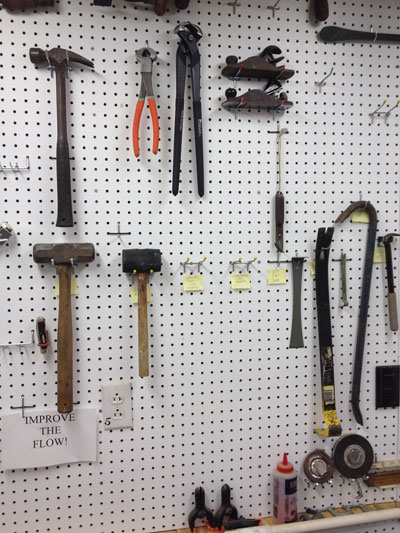
|
|
I am always thinking in terms of improving the flow of work
in the shop. Rearranging is an option for any tool except
the bench, which is bolted to the wall. This little sign
reminds me to keep that concept in my head.
|
If you suspect the surface you want to use a Post-It Note on has contaminants, such as dust or grease, clean first with an all-purpose cleaner.
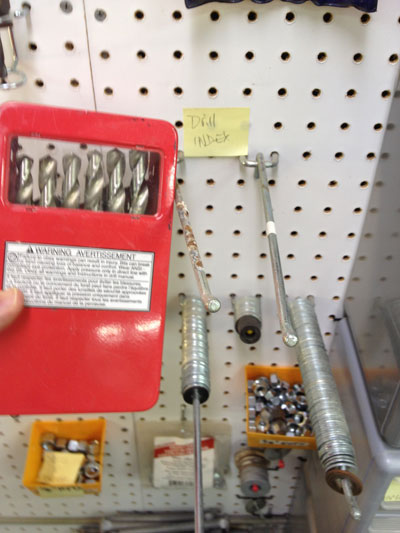
|
|
Don't want the drill index next to the screw bin anymore?
No problem! Move the peg and take the Post-It Note label
with you to the new location. Drill press, anyone?
|
If the surface has a finish compatible with alcohol, wipe gently to remove all traces of oil. For painted surfaces, such as pegboard, a degreasing cleaner such as Formula 409 works well. Rebuilding my shop after Hurricane Katrina, 2005, I am still not committed to all of the locations of hanging tools and jigs, so I need my Post-It Notes to keep a good grip until I'm 100% sure of the final residing place of each item.
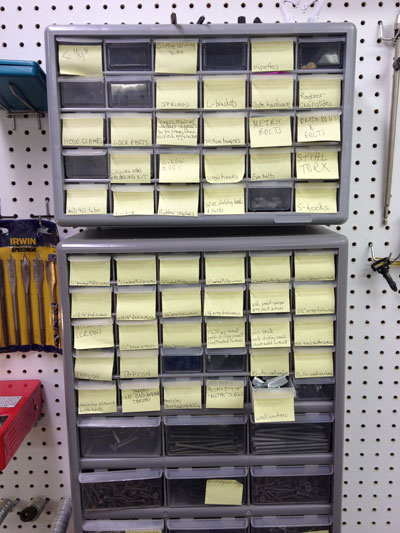
|
|
Some people like these little drawers for storage,
others like open bins, still others like a drawer in a cabinet
with dividers inside. See this month's El Cheapo tip
for yet another alternative.
|
I also started over with a new warren of plastic drawers. For now, each one has a temporary Note designating its contents. When the time is right for permanent labels, Avery makes it easy. Templates already exist in Word, Word Perfect and Open Office.
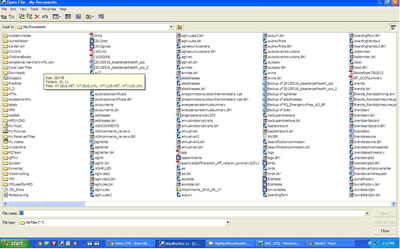
|
|
First, make a directory (folder) exclusively for labels.
That way you can use the same template for everything
from shop labels to address labels, and they are all
organized in one place.
|
They have a size for every need. For tiny drawers, use the 5167 Return Address label.
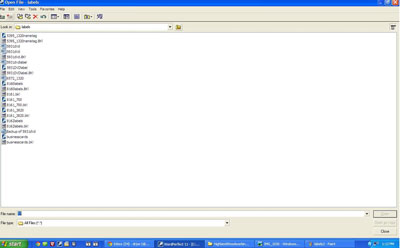
|
|
Word Perfect, and some other word processors, may
change the format of your document according to the
printer you choose. For that reason, I include the printer
designation in the name of template's file. Thus, 8161_700
is the template I use for Avery label 8161
on our HP700-series printer.
|
For large plastic drawers, use their 5168 Shipping Label. And, they have an in-between size label for everything else. Those of us visually challenged have complete control over the size of the type, limited only by the size of the label we choose. You also have the option to print small, so that you can see around the label to view the drawer's contents.
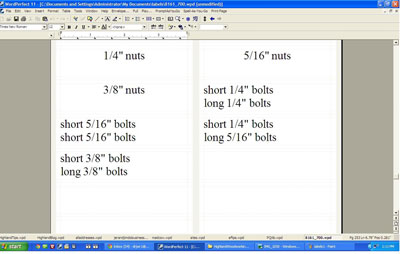
|
|
Change the size of the type according to your visual
capabilities. It can be an advantage to have a small label,
which allows you to see the contents of the drawer
more easily.
|
Tip #2
No Southern-fried Southern boy wants to be called a Yankee, but we share the characteristics of shrewdness and thrift. Thus, each month we include a money-saving tip. It's OK if you call me "cheap."
On the other hand, Steve Johnson recently called me
"parsimonious."
I keep forgetting to go and look that up! While there are plenty of ways to store things, don't let yourself get stuck in "one-size-fits-none." For example, you could stack a whole bunch of washers in a drawer and they would fit very efficiently if you took your time to stack them neatly. Of course, close the drawer once and they are topsy-turvy again. (Ever wonder where the term "topsy-turvy" came from?
Click here
for the etymology.) Here is a fast, easy and efficient way to store washers and it works with all sizes and shapes and even organizes your washers according to the quality of their physical condition. Pegboard hooks.
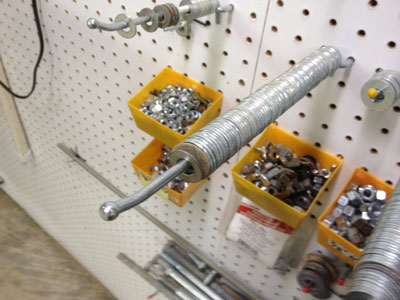
|
|
The only thing pegboard hooks can't do is hold really tiny
washers. With this technique you can buy in bulk
and save money, if you use a lot of washers, that is.
|
If you have a lot of washers all one size, use a long hook. If you have a few 1/4" washers that are a little rusty, but still usable, use a short pegboard hook. Or, send them to me.

|
|
Grab a few or grab a bunch. You can even count
them before you slide them off the hook, taking only
what you need. No box or container to
return to storage when the job is finished.
|
If you don't use pegboard, you could use a nail and lop the head off with your bolt cutters, hacksaw or Dremel tool.
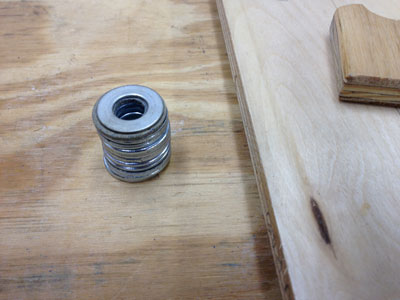
|
|
Take the neat stack of washers directly to where
you're going to use them.
|
Jim Randolph is a veterinarian in Long Beach, Mississippi. His earlier careers as lawn mower, dairy farmer, automobile mechanic, microwave communications electronics instructor and journeyman carpenter all influence his approach to woodworking. His favorite projects are furniture built for his wife, Brenda, and for their children and grandchildren. His and Brenda's home, nicknamed Sticks-In-The-Mud, is built on pilings (sticks) near the wetlands (mud) on a bayou off Jourdan River. His shop is in the lower level of their home. Questions and comments on woodworking may be sent to
DrRandolph@MyPetsDoctor.com
. Questions about pet care should be directed to his blog on pet care,
www.MyPetsDoctor.com
. We regret that, because of high volume, not all inquiries can be answered personally.
Return to
Wood News
front page


